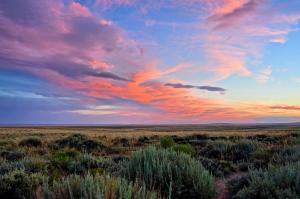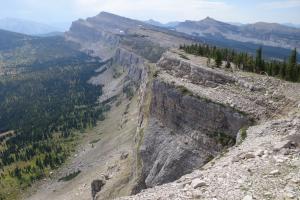Interagency MOU Signals Commitment to Cooperative CDT Stewardship
The renewed MOU highlights the success of a model that divides responsibility for stewardship of the CDT between CDTC and federal agencies.
Completion of the updated MOU demonstrates the importance of the CDT and our shared commitment,” said Teresa Martinez, Executive Director of the Continental Divide Trail Coalition.”
GOLDEN, CO, UNITED STATES, July 31, 2025 /EINPresswire.com/ -- The Continental Divide Trail Coalition (CDTC) is celebrating the completion of a renewed Interagency Memorandum of Understanding (MOU) that establishes cooperative stewardship of the Continental Divide National Scenic Trail (CDT). The MOU is signed by the USDA Forest Service, the National Park Service, and the Bureau of Land Management, and establishes the CDTC’s role as the lead organization working in partnership with federal land management agencies on behalf of the CDT. — Teresa Martinez
The renewed MOU demonstrates the ongoing success of the shared stewardship model along the CDT. The shared stewardship model distributes responsibility for completing, elevating, and protecting the CDT between CDTC and federal agencies.
CDTC signed its first MOU with the Forest Service in 2014 and its first Interagency MOU with all three primary land management agencies in 2020. The renewed Memorandum of Understanding is a non-binding document that will extend through 2030 and establishes mutual commitments to working together in stewardship of the CDT.
The basis of the shared stewardship model was established in the National Trails System Act of 1968, which recognized the valuable role of nonprofit organizations and volunteers in the development, maintenance, and management of the National Trails System. In the decades since, the shared stewardship model along the CDT and across the National Trails System has become a shining example of efficient, effective management of public lands.
Each year, CDTC receives an allocation from the US Forest Service CDT Program, and combined with private funding and volunteer hours, amplifies the impacts of federal funds on the CDT. In Fiscal Year 2024, CDTC delivered a 6.8:1 match on the USFS allocation to CDTC.
In the face of funding and staffing cuts at federal land management agencies, the shared stewardship model allows CDTC to efficiently bridge gaps in federal capacity, ensuring the CDT continues to provide high-quality outdoor recreation opportunities to visitors from across the country. CDTC works with federal agencies to monitor conditions along the CDT, identify priority projects, and host volunteer projects to address these needs. CDTC also advocates for the CDT, maintains a Gateway Community program to connect community members to the trail, and provides information for visitors to the trail.
“Completion of the updated MOU demonstrates the importance of the CDT and our shared commitment,” said Teresa Martinez, Executive Director of the Continental Divide Trail Coalition.
“It ensures that this treasured resource continues to connect visitors to the landscapes, watersheds, cultures, and history of the Mountain West for years to come.”
The MOU states:
“The partners envision a future of the CDNST, where: (1) the scenic, historic, natural and
cultural resources of the corridor are protected and conserved to afford a unique and
nationally significant scenic trail experience; (2) a complete, continuous, and seamless
CDNST provides optimal outdoor recreation opportunities, and 3), the CDNST is
enjoyed and appreciated by diverse visitors and receives broad local, state, and national
citizen support and engagement.
To achieve this vision, the Agencies and CDTC will need to work together to build local,
State, regional and national public support for the Trail, provide accurate trail
information, promote and develop long-term volunteerism, and promote trail marking,
maintenance and operations consistent with the CDT Comprehensive Plan.”
Audra Labert
Continental Divide Trail Coalition
alabert@cdtcoalition.org
Visit us on social media:
LinkedIn
Bluesky
Instagram
Facebook
YouTube
Other
Legal Disclaimer:
EIN Presswire provides this news content "as is" without warranty of any kind. We do not accept any responsibility or liability for the accuracy, content, images, videos, licenses, completeness, legality, or reliability of the information contained in this article. If you have any complaints or copyright issues related to this article, kindly contact the author above.



